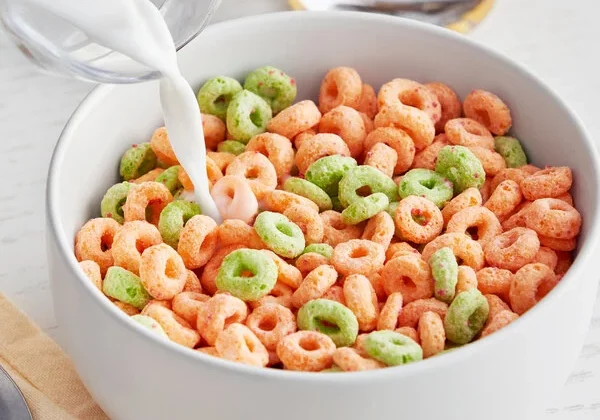
You’re part of a large group if you enjoy having a bowl of cereal as your morning meal or as a quick snack during the day. Statista reports that in 2020 alone, more than 283 million individuals in the United States indulged in cold cereal.
This popular food choice shows no signs of waning anytime soon, as projections indicate that over 290 million Americans will be shopping for cereals by 2024.
Unfortunately, despite their widespread appeal, certain types of cereals are far from being nutritious choices. In reality, they may be even worse for your health than anticipated. The question then arises: How can you determine which cereals should be avoided?
When looking for a nutritious breakfast cereal, Danielle McAvoy from Territory Foods suggests paying attention to the grams of sugar and fiber content. The presence of sugar as one of the top two ingredients should be avoided altogether.
A breakfast cereal that exceeds 7 grams of sugar per serving, particularly if it contains added sugars, does not qualify as a healthy choice.
Although no form of sugar can be considered truly beneficial for health, opting for natural sweeteners like honey and maple syrup is preferable over processed alternatives such as corn syrup, evaporated cane juice, dextrose, among others.
In addition, McAvoy emphasizes the importance of consuming at least 4 grams of fiber, advising against cereals made with refined grains and suggesting opting for those with whole grains instead.
Furthermore, she highlights the negative impact of cereals containing additives such as oils, preservatives, and artificial colors.
Considering this information, it is recommended to steer clear of the following cereals listed as the 24 worst options to avoid. For additional healthy breakfast ideas, explore our selection of 7 Healthy Breakfast Foods That Raise Blood Sugar High-Fiber Breakfasts That Keep You Full.
Worst Cereals For Diabetics
1. Froot Loops

Froot Loops is a prime example of a cereal to avoid due to its nutritional shortcomings. Despite its vibrant appearance and fruity taste, Froot Loops is high in added sugars and lacks substantial nutritional value.
These colorful loops are artificially flavored and contain minimal real fruit content. With a lack of fiber and protein, this cereal can lead to energy crashes and doesn’t provide sustained satiety.
Additionally, its artificial additives raise concerns about their impact on health. When seeking a more wholesome breakfast option, it’s best to steer clear of Froot Loops and opt for cereals that offer greater nutritional benefits without the excess sugars and additives.
2. Cap’n Crunch
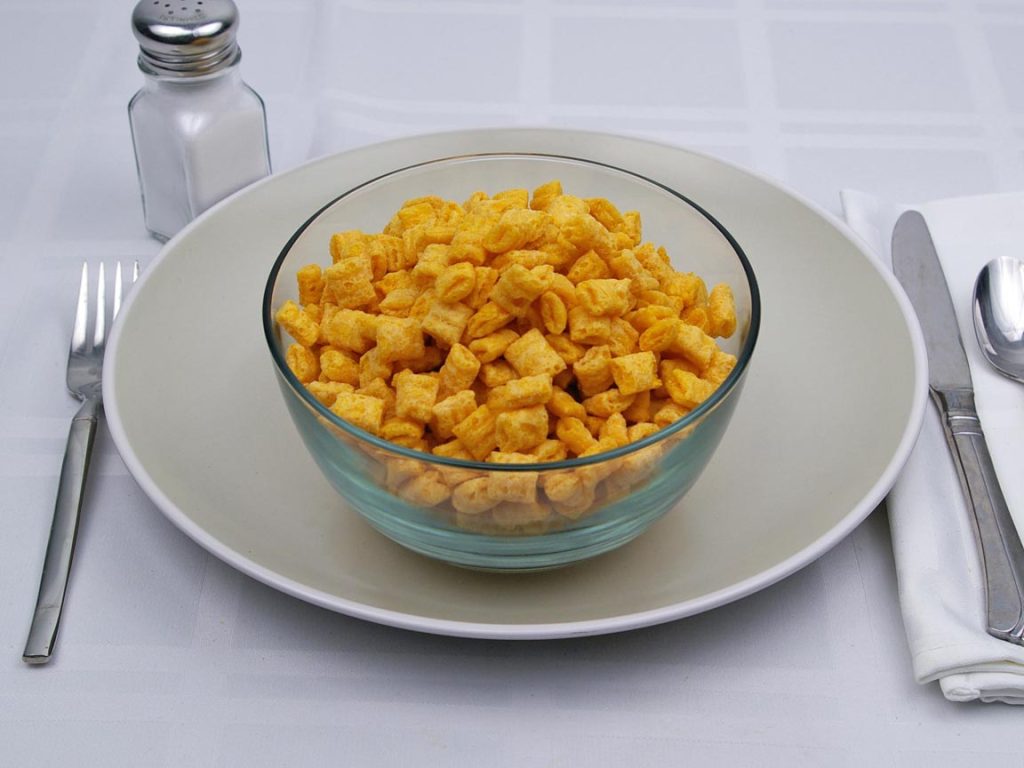
Cap’n Crunch is a cereal that often falls into the category of less healthy choices. Despite its enjoyable crunch and sweet taste, this cereal is packed with added sugars and lacks essential nutrients.
The primary ingredient, corn flour, is processed and offers little nutritional value. Its high sugar content can contribute to spikes in blood sugar levels and energy crashes. Additionally, Cap’n Crunch contains artificial colors and flavors.
The lack of fiber and protein in this cereal can leave you feeling unsatisfied and hungry shortly after consumption. To make a more nutritious choice for your breakfast, it’s advisable to skip Cap’n Crunch and opt for cereals with whole grains, higher fiber, and fewer added sugars.
3. Lucky Charms

Lucky Charms may be magically delicious, but they’re far from a nutritious breakfast option. This cereal is notorious for its high sugar content, consisting of sweetened cereal pieces and sugary marshmallows.
While the colorful marshmallows may be enticing, they contribute to the cereal’s lack of nutritional value. Lucky Charms provide minimal fiber, protein, and essential vitamins, making it a poor choice for a balanced meal.
The excessive sugar can lead to energy crashes and unhealthy eating habits. Additionally, the artificial colors and flavors raise concerns about their potential effects on health.
When looking for a better breakfast alternative, it’s wise to steer clear of Lucky Charms and opt for cereals that prioritize whole grains, fiber, and essential nutrients.
4. Cocoa Puffs
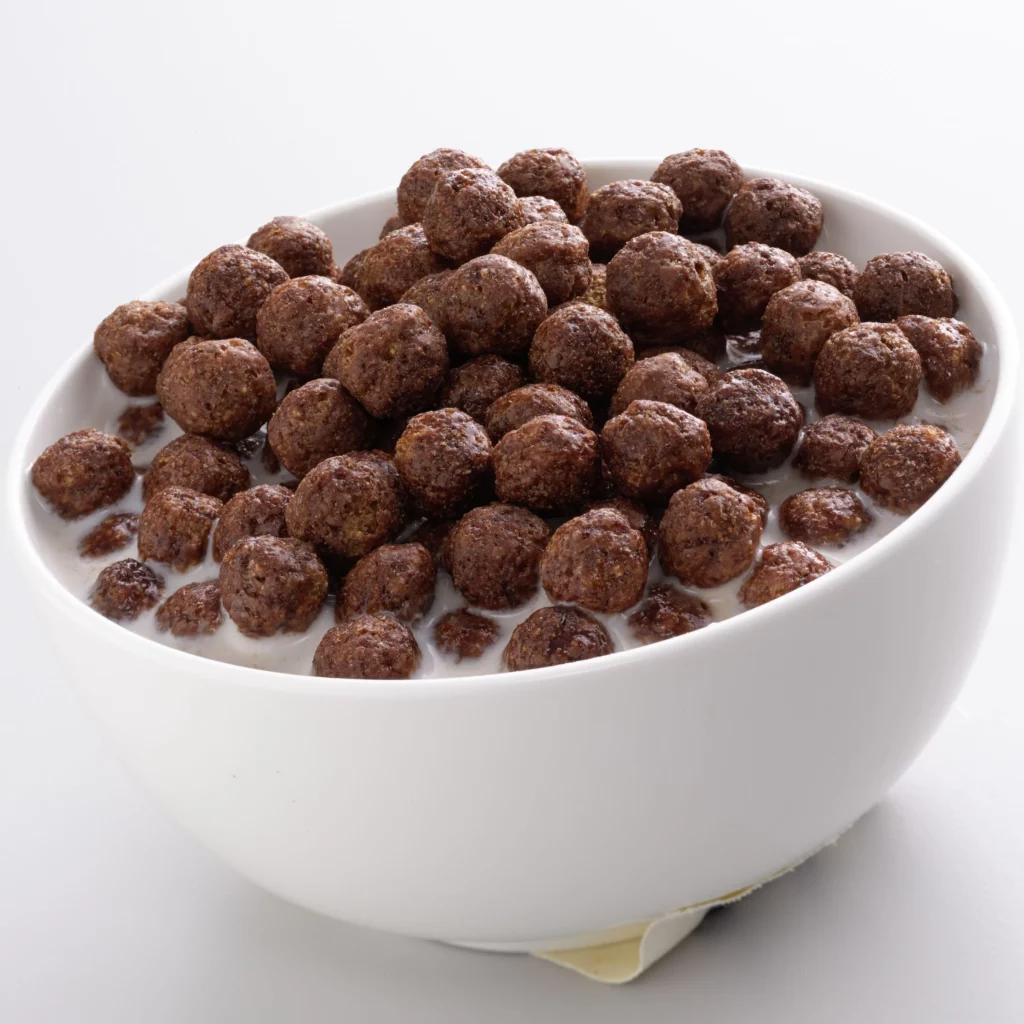
Cocoa Puffs may promise a chocolatey breakfast delight, but they’re far from a nutritious choice. Packed with high levels of added sugars, this cereal can lead to energy spikes and crashes.
The chocolate flavor often comes from artificial sources, raising concerns about the overall quality of the ingredients. Cocoa Puffs lack essential nutrients like fiber and protein, leaving you unsatisfied and hungry soon after eating.
Additionally, their low nutritional value makes them a poor start to your day. If you’re seeking a healthier breakfast option, it’s best to avoid Cocoa Puffs and opt for cereals that provide more balanced nutrition, such as those with whole grains, higher fiber content, and lower sugar levels.
5. Cinnamon Toast Crunch

Cinnamon Toast Crunch may offer a nostalgic and flavorful breakfast, but it’s wise to approach it with caution. This cereal is laden with added sugars, contributing to its sweet and addictive taste.
While the cinnamon flavor may seem appealing, it’s often derived from artificial sources. Cinnamon Toast Crunch lacks substantial nutritional value, with low fiber and protein content. This can lead to quick hunger after consumption.
Additionally, its high sugar content can result in energy crashes and impact overall health.
Considering its poor nutritional profile, it’s advisable to skip Cinnamon Toast Crunch and opt for cereals that prioritize whole grains, fiber, and essential nutrients for a more balanced and satisfying breakfast.
6. Trix
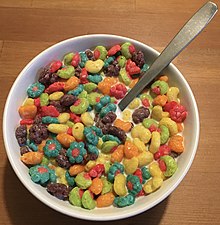
Trix cereal may charm with its colorful and playful appearance, but it’s not a recommended choice for a nutritious breakfast. Loaded with added sugars, its fruity taste comes at the cost of health.
The vibrant colors often stem from artificial additives, raising concerns about their impact on well-being. Trix cereal lacks significant fiber and protein, leading to rapid hunger and potential overeating later in the day.
The high sugar content can contribute to energy crashes and unhealthy eating habits. As a result, opting for cereals with better nutritional profiles, like those high in whole grains, fiber, and essential nutrients, is a wiser choice for a breakfast that supports overall health and well-being.
7. Reese’s Puffs
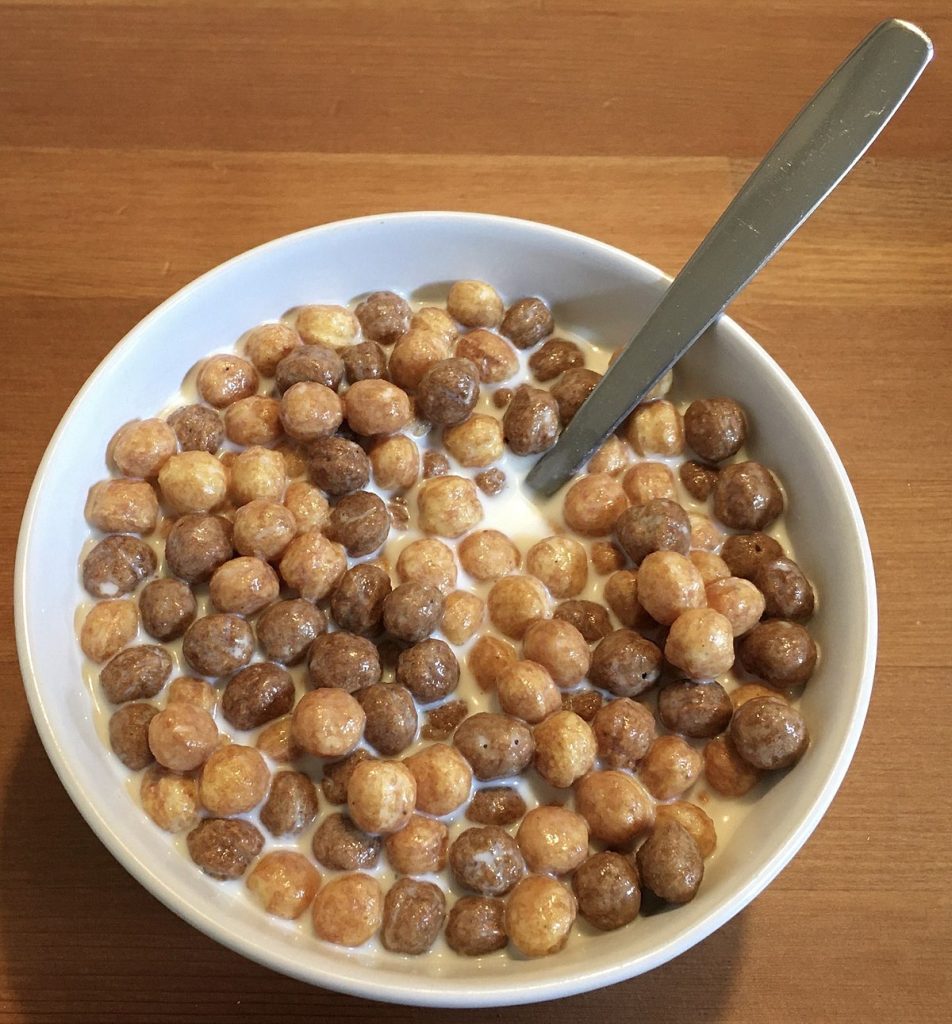
Reese’s Puffs cereal might remind you of a beloved candy, but its nutritional value falls short. Packed with added sugars and artificial flavors, this cereal lacks the essential nutrients needed for a balanced breakfast.
Despite its chocolate-peanut butter appeal, it’s important to note that the flavors are often artificial. The minimal fiber and protein content can leave you hungry shortly after eating, leading to overconsumption.
For a more wholesome start to your day, consider skipping Reese’s Puffs and opting for cereals with higher fiber, less sugar, and real nutritional value.
8. Honey Smacks

Honey Smacks cereal might seem like a sweet choice, but its nutritional drawbacks are significant. Packed with added sugars, this cereal can lead to unhealthy spikes in blood sugar levels and energy crashes.
Despite its name, the cereal’s sweetness often comes from artificial sources. The lack of fiber and protein in Honey Smacks can leave you unsatisfied and hungry soon after eating.
For a more nourishing breakfast, it’s wise to avoid Honey Smacks and choose cereals that offer better nutritional value, like those with whole grains and less added sugars.
9. Golden Crisp

Golden Crisp cereal may entice with its golden appearance, but it’s a nutritional pitfall. Loaded with added sugars and minimal fiber, it lacks the sustenance needed for a healthy start. Its sweet taste is often artificial. Opting for cereals with better nutritional value is a wiser choice.
10. Cookie Crisp
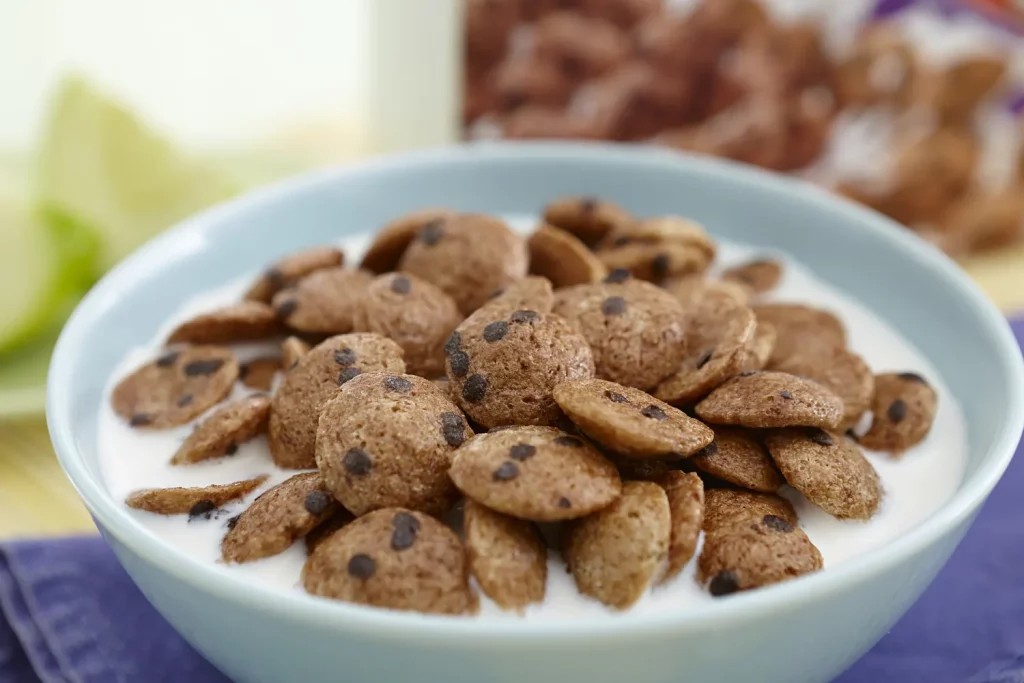
Cookie Crisp cereal may resemble cookies, but its nutritional value is far from satisfying. High in added sugars and artificial flavors, it lacks essential nutrients needed for a balanced breakfast.
The minimal fiber and protein content won’t keep you full, potentially leading to overeating later. When looking for a healthier option, it’s best to skip Cookie Crisp and choose cereals that offer more whole grains, fiber, and less sugar.
Worst Cereal For Breakfast
Breakfast is often considered the most important meal of the day, providing us with the energy and nutrients needed to kick-start our morning. And while many of us reach for a bowl of cereal in order to start our day off right, not all cereals are created equal. I
n fact, there are some breakfast options out there that might as well be labeled worst cereal for breakfast. These sugary concoctions may taste delicious, but they are packed with empty calories and lack any substantial nutritional value.
So, if you want to make sure your breakfast is truly fueling your body for success, it’s time to steer clear of these diet-damaging cereals and opt for healthier alternatives instead.
11. Frosted Flakes

Frosted Flakes cereal might promise “great” taste, but it’s not great for nutrition. Loaded with added sugars and low in fiber and protein, it lacks the nutrients necessary for a balanced meal.
The sugar-coated flakes contribute to energy spikes and crashes. Opting for cereals with better nutritional value, such as those with whole grains and less sugar, is a smarter choice for a healthier breakfast.
12. Count Chocula
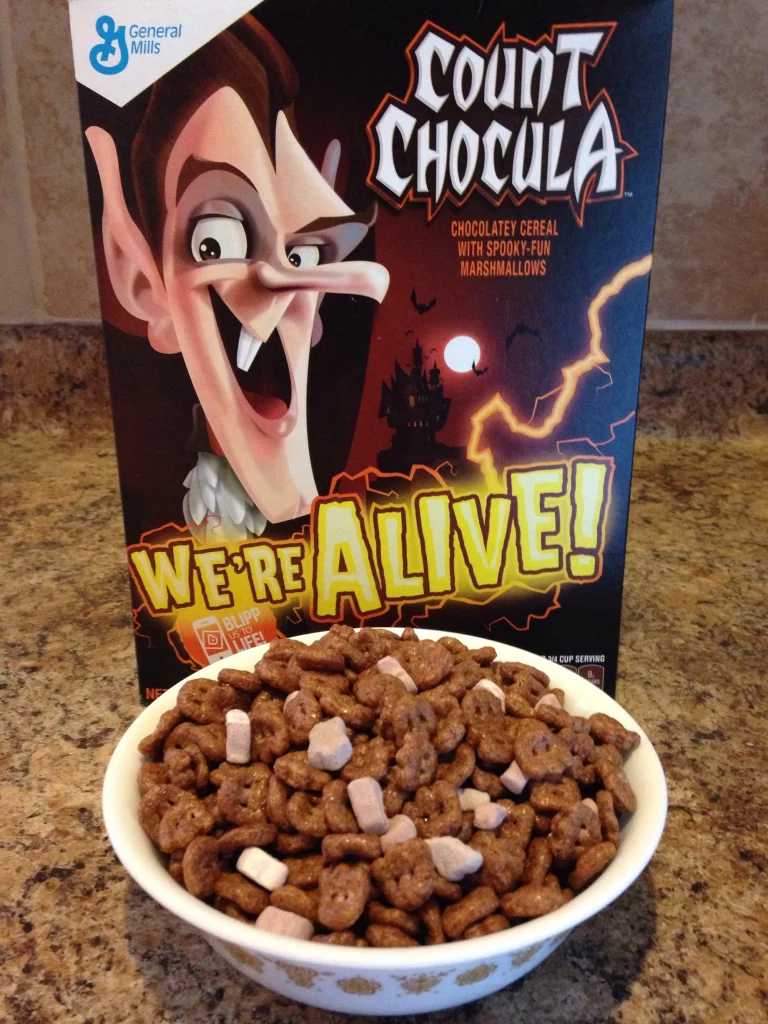
Count Chocula cereal’s chocolatey appeal can’t mask its nutritional pitfalls. High in added sugars and artificial flavors, it lacks the nutrients needed for a wholesome breakfast.
The chocolate flavor often comes from sources that are far from real cocoa. With minimal fiber and protein, it won’t provide sustained energy. Opting for cereals that prioritize whole grains, higher fiber content, and less sugar is a better choice to support your health and well-being.
13. Franken Berry

Franken Berry cereal may have a fun appeal, but it’s not a wise choice for your breakfast. Packed with added sugars and artificial flavors, it lacks nutritional value. The strawberry flavor often comes from artificial sources.
With minimal fiber and protein, it won’t keep you full for long. Opting for cereals with better nutritional profiles, like those with whole grains and less sugar, can help you make healthier breakfast choices that support your overall well-being.
14. Apple Jacks
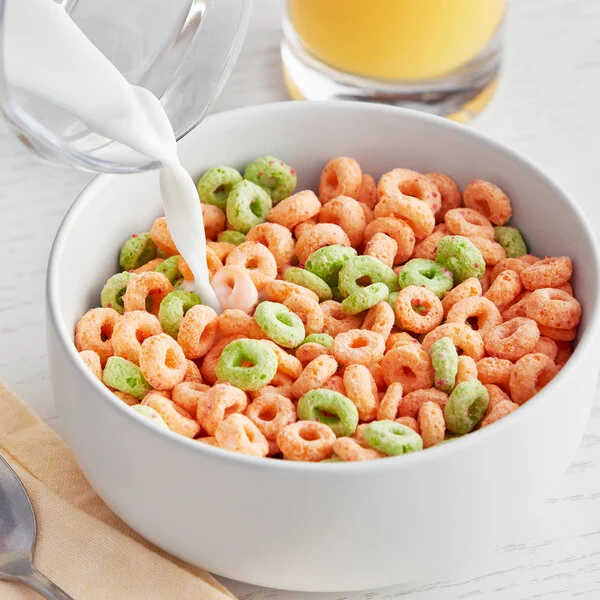
Apple Jacks cereal may tempt with its fruity flavor, but it falls short in terms of nutrition. Loaded with added sugars and artificial flavors, it lacks the essential nutrients required for a balanced breakfast.
The fruity taste often comes from artificial sources rather than real fruit. With minimal fiber and protein, it won’t provide lasting satiety. Opting for cereals with higher nutritional value, such as those with whole grains and less sugar, is a better choice for your overall health.
15. Honey Nut Cheerios (due to high sugar content)
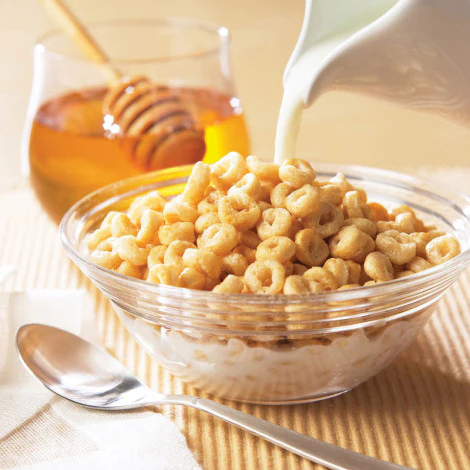
Surprisingly, Honey Nut Cheerios, often perceived as a healthier option, can be a cereal to avoid due to its high sugar content. Despite the wholesome image, it contains added sugars that can contribute to excessive calorie intake and energy fluctuations.
Opting for cereals with lower sugar content and more nutritional value, such as those rich in whole grains and fiber, is a better choice for maintaining a balanced and healthier breakfast routine.
16. Pops

“Pops” cereal is notorious for its high sugar content and lack of nutritional value. Loaded with artificial colors and flavors, it offers minimal essential nutrients while promoting unhealthy eating habits.
Its sugary nature can lead to energy crashes and weight gain. Opt for cereals with whole grains, fiber, and fewer added sugars to make a healthier choice for your breakfast.
17. Corn Pops

Corn Pops cereal, often marketed to kids, is a prime example of a sugar-laden breakfast option. With little fiber and minimal nutritional benefits, it can cause rapid blood sugar spikes followed by crashes, leaving you hungry and fatigued.
The vibrant colors and artificial flavors might be enticing, but they contribute to an unhealthy diet. Opt for cereals that are higher in fiber, lower in sugar, and made from whole grains to ensure a more balanced and nutritious start to your day.
17. Smorz
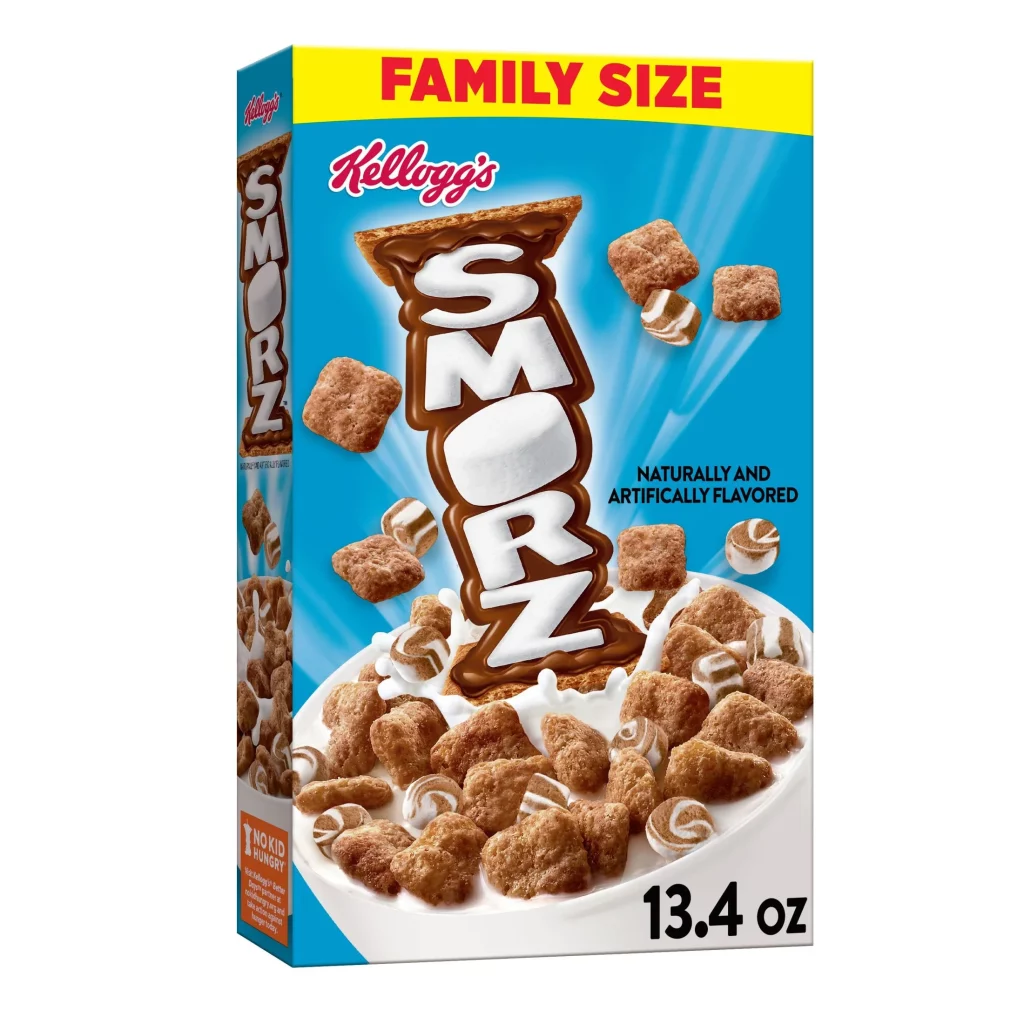
Smorz cereal, despite its appealing marshmallow and chocolate combination, falls into the category of cereals to avoid. It’s laden with added sugars, artificial flavors, and lacks substantial nutritional value.
The attractive packaging can be deceiving, masking its poor health profile.
Consuming such high-sugar cereals regularly can lead to weight gain, energy crashes, and increased risk of health issues. Opt for cereals that prioritize whole grains, fiber, and minimal added sugars.
Making informed choices about breakfast can contribute to better overall health and sustained energy throughout the day.
Read more : 30 Best healthy lunch ideas for weight loss
18. Pebbles (Fruity Pebbles, Cocoa Pebbles, etc.)

Cereals like Fruity Pebbles and Cocoa Pebbles may seem fun with their colorful appearance, but they’re best avoided. Packed with added sugars, these cereals offer little nutritional value and can lead to sugar crashes.
The vibrant hues often come from artificial dyes, posing potential health risks. While they may be tempting, their high sugar content can contribute to weight gain and other health issues.
Opt for cereals that prioritize whole grains, fiber, and lower sugar content for a more balanced start to your day. Your long-term health will benefit from making mindful choices about your breakfast.
19. Crunch Berries
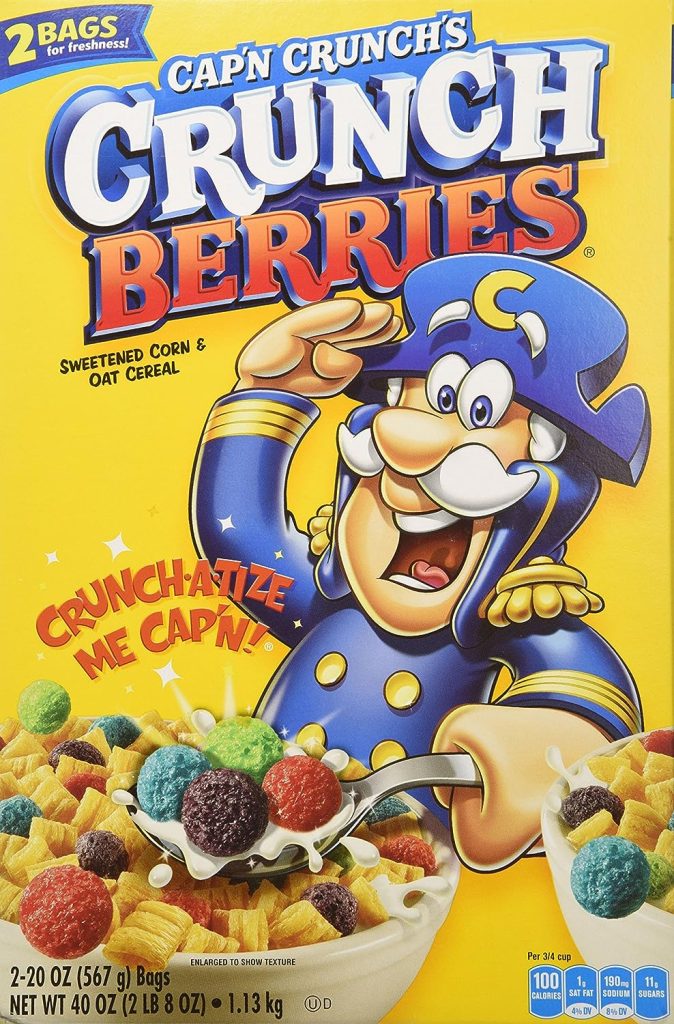
Crunch Berries cereal, though appealing with its colorful berries, is a cereal to steer clear of. Loaded with added sugars, it lacks essential nutrients and can lead to energy crashes. The vibrant colors often come from artificial dyes, which may have negative health effects.
Despite its taste, the excessive sugar content can contribute to weight gain and health problems. Opt for cereals with whole grains, fiber, and lower sugar content for a more nourishing breakfast. Making wise choices about your morning meal can have a positive impact on your overall well-being.
Read More : 30 Healthy lunch ideas for kids
20. Boo Berry

Boo Berry cereal, known for its ghostly charm, falls among cereals to avoid. Packed with added sugars, it lacks nutritional value and can lead to energy crashes. Artificial flavors and dyes in its colorful marshmallows pose potential health risks.
Despite its appeal, the high sugar content can contribute to weight gain and health issues. Prioritize cereals with whole grains, fiber, and lower sugar for a healthier breakfast choice. Making mindful decisions about your morning meal can positively impact your long-term health.
21. Alphabits
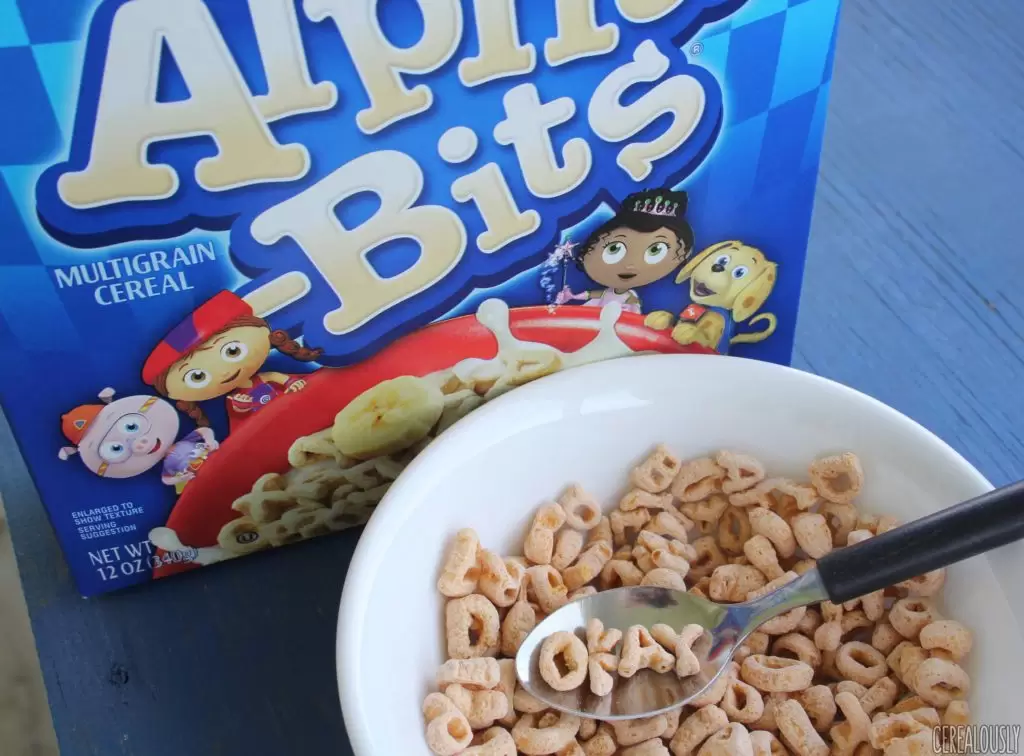
Indeed, Alphabits cereal often falls into the category of less healthy breakfast options. While its playful alphabet shapes might attract kids and nostalgia seekers, it’s crucial to recognize its nutritional shortcomings.
Alphabits, like several other sugary cereals, tends to be high in added sugars and lacking in essential nutrients. Choosing cereals that prioritize whole grains, lower sugar content, and a greater array of vitamins and minerals would be a wiser and more health-conscious choice.
Your breakfast bowl should provide sustained energy and contribute positively to your overall well-being – something that Alphabits might struggle to deliver.
Read More: 8 Healthy dessert To pick On The Grocery Shelves
22. Kix (original version)
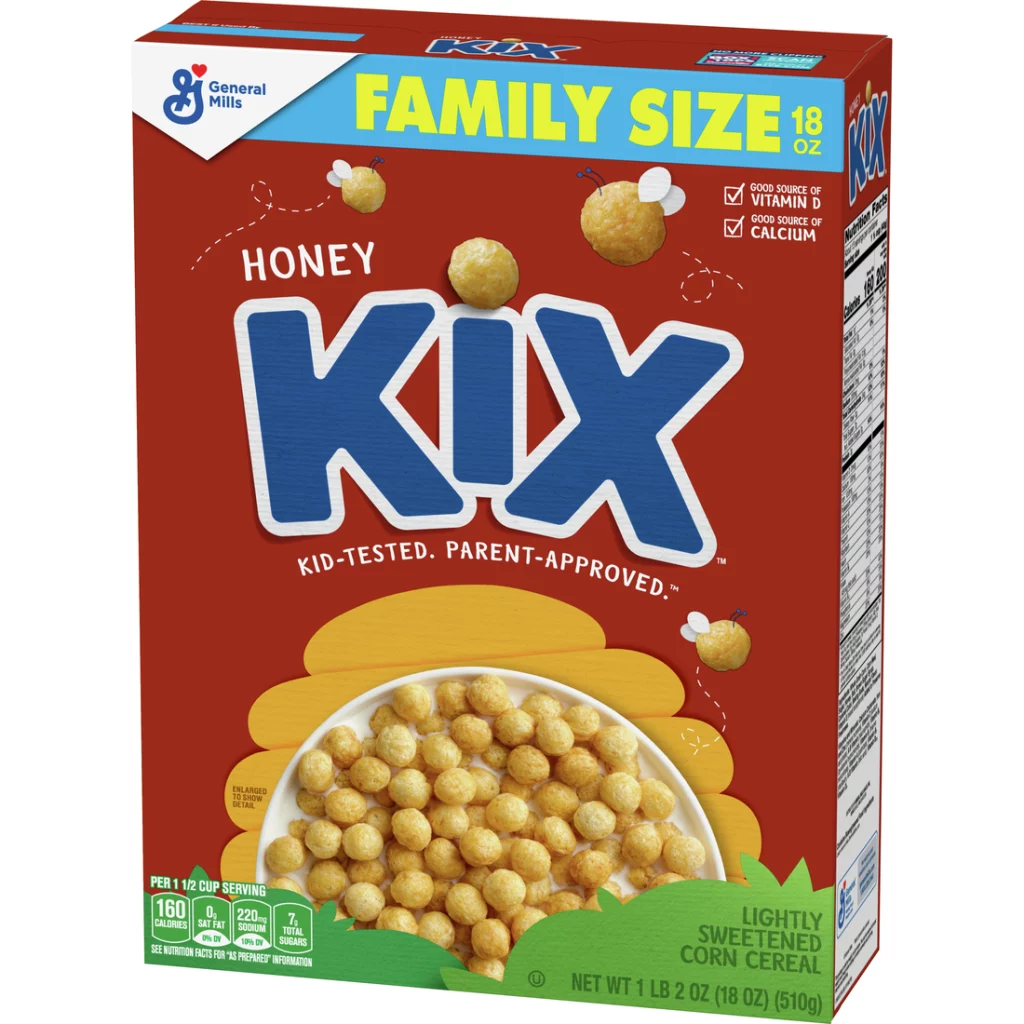
Surprisingly, even seemingly innocent cereals like the original version of Kix have their downsides. While Kix promotes itself as a kid-friendly, “kid-tested, mother-approved” option, it’s essential to scrutinize its nutritional profile.
The original Kix cereal may lack the colorful marshmallows and flashy packaging of certain sugary cereals, but it can still be problematic due to its refined grains and relatively high carbohydrate content.
These factors can lead to quicker spikes in blood sugar levels, leaving you hungry sooner. Opting for cereals with whole grains, higher fiber content, and lower sugar can offer a more balanced and nourishing breakfast choice.
23. Waffle Crisp

Waffle Crisp cereal may tempt taste buds with its waffle-shaped bites, but it’s far from a nutritious choice. Loaded with added sugars and lacking in essential nutrients, it offers little beyond empty calories. Opt for cereals with whole grains and less sugar for a healthier breakfast.
Note
These cereals are often laden with sugars, artificial flavors, and colors, offering little nutritional value. Opt for cereals with higher fiber content, whole grains, and minimal added sugars to start your day off on a healthier note.
When choosing cereals, it’s important to read the nutrition labels and aim for options that are higher in fiber, whole grains, and protein, while being lower in added sugars. Look for cereals with minimal processing and those that have a lower glycemic index to help manage blood sugar levels more effectively. Additionally, portion control is key, so be mindful of serving sizes.
A better choice for people with diabetes would be whole-grain, high-fiber cereals with minimal added sugars, and pairing them with a source of protein (such as adding nuts or Greek yogurt) to help stabilize blood sugar levels. As always, it’s advisable to consult a registered dietitian or healthcare professional for personalized dietary recommendations based on individual health needs and goals.
What cereal should I eat everyday?
For a nutritious daily choice, opt for whole-grain options like oatmeal, whole-grain flakes, or bran cereal. These provide fiber, vitamins, and steady energy release, supporting a balanced diet. Be sure to check labels for low sugar content and minimal processing to make the best cereal selection.
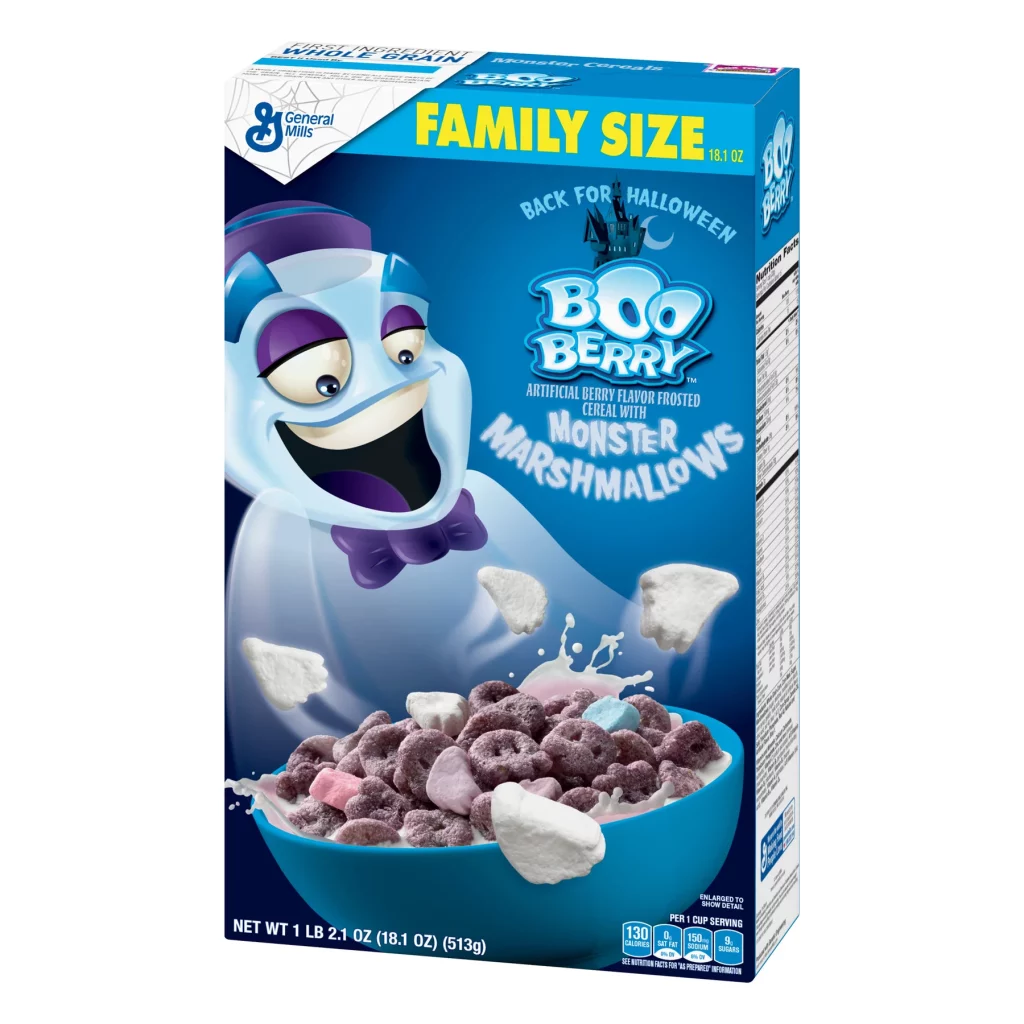
What cereals are still healthy?
Cereals that remain healthy are typically whole-grain, low in added sugars, and minimally processed. Look for options like oatmeal, whole-grain flakes, muesli, and bran cereal.
These choices provide essential nutrients, including fiber and vitamins, while avoiding excessive sugars and additives. Always check the nutrition label to ensure you’re making a wholesome selection for your breakfast routine.
What cereals should you not eat?
Avoid cereals high in added sugars, artificial colors, and refined grains. Skip options like sugary puffs, colorful loops, and overly processed choices.
Instead, opt for whole-grain, low-sugar cereals with higher fiber content for a healthier breakfast that supports your well-being.
Which cereal is the most unhealthy?
Cereals with extremely high sugar content and minimal nutritional value, like many colorful and overly sweet options, rank among the most unhealthy choices. Always check labels to make informed decisions.
Why should I avoid certain cereals?
Certain cereals are laden with excessive added sugars, artificial colors, and refined grains. These factors contribute to empty calories, energy crashes, and potential long-term health issues like obesity and diabetes.
Read More
Best 31 Healthy Restaurants in America | Locations
Sweet Tomatoes Restaurant Is Reopening Locations
How To Make Best Tom Brown Baby Food| Easy directory.
Top Starbucks Menu With Price List Philippines 2023
17 delicious Spanish breakfast foods to start your day off right
Start to Finish: Homemade Sausage Rolls
Copycat Starbucks Medicine Ball Recipe
Best Homemade Trader Joe’s Hash Browns: A Step-by-Step Recipe
How To Cook Fried Egusi Soup With Tomatoes.
What are the dangers of high sugar content in cereals?
High sugar content leads to rapid spikes in blood sugar levels, followed by crashes that leave you hungry and fatigued. Excess sugar intake is linked to weight gain, dental problems, and an increased risk of chronic diseases.
Are colorful cereals a bad choice?
Yes, colorful cereals often contain artificial colors, flavors, and high sugar content. These additives offer little nutritional value and can have negative impacts on health, especially for children.
Why are overly processed cereals unfavorable?
Overly processed cereals strip away essential nutrients during manufacturing. They lack the fiber, vitamins, and minerals found in whole grains, leaving you with a less nutritious option.

How can I identify healthier cereal options?
Look for cereals with whole grains as the main ingredient, minimal added sugars (aim for less than 6-8 grams per serving), and higher fiber content (at least 3 grams per serving).
Are there specific ingredients to watch out for?
Yes, avoid cereals with high-fructose corn syrup, artificial sweeteners, and hydrogenated oils. Additionally, check for ingredients that are difficult to pronounce or understand.
Can I find healthier versions of popular cereals?
Yes, many brands now offer healthier alternatives to popular cereals. Opt for whole-grain versions of classics like flakes, puffs, or clusters with lower sugar and no artificial additives.
What are some practical alternatives to unhealthy cereals?
Consider whole-grain oatmeal, unsweetened muesli, bran flakes, shredded wheat, or plain puffed grains. You can also mix cereals with fresh fruits and nuts for added flavor and nutrition.
